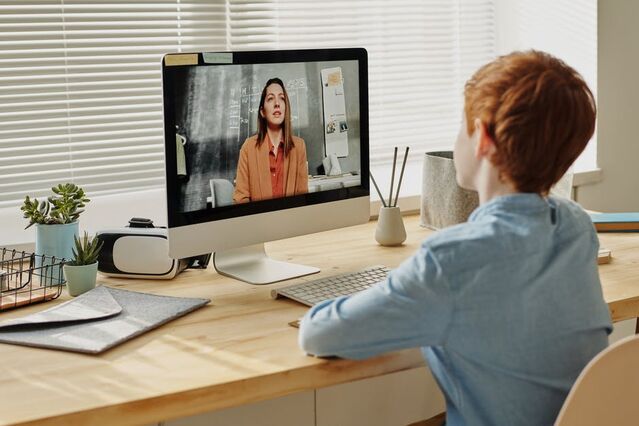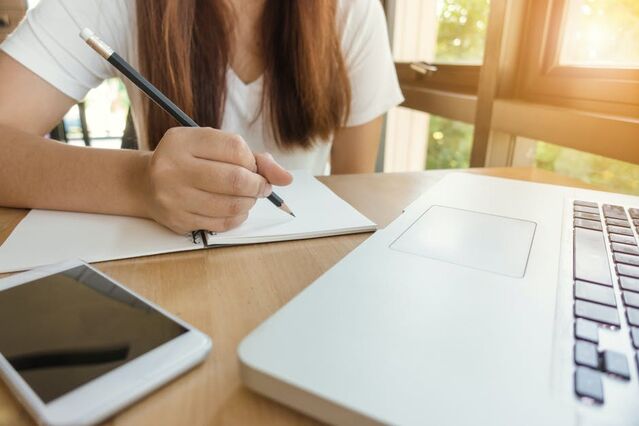Health
Back to School in a Pandemic: More Tips to Foster Mental Health
Part II: Strategies to help students, parents, and teachers.
Posted August 16, 2020
Going back to school looks a bit different for us all this year. Just as COVID-19 rates and regulations have varied across the nation, plans and preferences pertaining to best practices for the upcoming school year have been wide-ranging as well.
The diverse options and considerations, not to mention merely living in a historic pandemic, has caused an understandable surge of stress for students, parents, and teachers alike. One undeniable constant is that the need for mental wellness during this time is essential.
This is the second part of a two-part series to help you foster mental well-being as you gear up for this academic year. If you missed part one, consider reviewing those strategies before you add these tips into your toolkit.
6. Use your resources wisely
Regardless of which method of returning to school applies to you, it will no doubt be different from past years. This school year may prompt understandable nervousness, worry, or even intimidation.
With that being said, there may be resources that have helped you in the past that continue to carry over to today, such as the technology that you may already own and your previously established social support system. It’s also possible that there may be resources that you have at your fingertips that, with a dash of creativity, could have a newfound use.
For example, natural light and plants in a work environment have been associated with calming effects,1 better sleep, and better overall quality of life.2 If you are preparing for virtual school, you may opt to create a workspace that has a window, and perhaps you may consider moving plants from elsewhere in your home into that environment as well.
Adults in this pandemic dilemma may also feel empowered by the notion that they themselves have the opportunity to be a resource to their children, their students, and/or one another. According to Albert Bandura’s Social Learning Theory,3 a key way that we learn is through observation. Therefore, you can build on the notion of open communication by demonstrating healthy behaviors to a child.
An example of this could be your ability to pause and practice a breathing technique when you are stressed. You may even opt to include the child in your process to provide an immersive learning experience. Another example can pertain to general COVID-19 cautionary methods (e.g., masks, 6-feet of distance); instead of solely telling youth what is acceptable, parents and teachers can show them by modeling the appropriate behavior.
Adults can pave the way for additional resources for their peers as well. For example, a parent may ask an educator for additional information to fill a knowledge gap, a friend may ask another for suggestions of self-care strategies that can be done while distancing, or a family member may share with another when they realize they are overwhelmed and need help.
Dr. Shillingford-Butler remarked that she recently questioned if there were ways to help her daughter learn virtually while buffering the consequences of staring at a laptop screen for the entire day. To enhance her brainstorm, she consulted with other parents who are also transitioning their children to virtual school.
Using her support system allowed her to expand her resources. For example, she was able to recognize a pre-existing resource (i.e., the option of screencasting to a larger and further screen). In addition, she was able to seek a recommendation for purchasing a potentially helpful new resource (e.g., blue light blocking glasses4).
If you have a budget available for additional resources, consider what you may need to help you feel more prepared for the year ahead. For example, for those who are returning to a brick-and-mortar classroom, you may opt to add masks and hand sanitizer to your list. For those of you who are immersing in an online learning environment, you may find it helpful to reflect on what may improve comfort and focus at home. Taking a moment to reflect on individual needs can help you to understand what resources are a priority in your process.

7. Plan ahead
Anne Flenner, a professional school counselor who works for Florida Virtual School, shares that getting organized sooner than later can help students, parents, and teachers alike. This can begin with the decision-making process and have benefits that last throughout the school year. The sooner you prepare, the sooner you can establish helpful systems, learn about the questions you have, and can reach out for help.
Flenner shared that something that she did for both of her children was print all of their worksheets for the school year. She shared that she perceived this task as an investment as it took a chunk of time out of her Sunday, yet she knows it will save her lots of time in the future. In addition, now both of her children have an established location of where to find their resources and can do so independently. Flenner acknowledged that sometimes time in advance may be a luxury, but she believes that doing what you can in advance can make a substantial difference.
Tiwari shared that as an educator, proactivity has helped her to feel more prepared for the year ahead. For example, she chose to allocate time in advance to prepare resources for the students. One example was spending time exploring what resources were first available to her as an educator and then creating a helpful document with links to resources that could be beneficial for the students as well. She also opted to create video tutorials to assist students in understanding the function of the course. In addition, she invested time in advance to create foundational lessons that serve as checkpoints for class methods (e.g., submitting an assignment online).

8. Embrace flexibility
As noted earlier, there are lots of unknowns as we continue to navigate this pandemic. In managing what you can, you acknowledge that you are doing the best with what is currently known; however, things may change and then cause your methods to require shifting as well. Adopting a flexible mindset and being aware of your changing reality will help you to adapt and thrive.
If you take another look at the Rational Decision-Making Model5 referenced in part one of this series, you will notice that the final step includes implementation and evaluation. Even without change, you may notice that the method you previously believed would be best may not be.
Give yourself grace in this moment. If there is something that this pandemic has taught us all is that life can throw curveballs at you. Caution blaming yourself for what is beyond your control, especially when you are genuinely doing the that best you can.
Flenner shared that one method that she recognized has been helpful for her family is including the weekends in their process. She highlighted that both of her children took favorably to doing less daily, rather than larger chunks of work Monday through Friday. In addition, aligned with her primary suggestion of being proactive, Flenner shared that she finds it helpful to allocate a few hours on Sunday to prepare for the week ahead.
Bear in mind that just as every situation is different, so is every individual. Learning styles vary from student to student and personality preferences may vary for children and adults alike. When helping multiple children, parents and educators should consider that what works for one student may not work for another. Having open communication, soliciting feedback, utilizing strengths, acknowledging opportunities for growth, and providing a variety of resources, can all be helpful ways to meet the needs of diverse learners.

9. Don’t lose sight of the positive
As you head back to school in a historic pandemic, you might find yourself dwelling on the negative. While there are certainly many valid difficulties, caution hyper-focusing on the issues that you lose sight of the positive in each situation.
For those who are going back to a traditional classroom, there is the risk of increased exposure, but there is also the potential benefit to social and emotional wellness from seeing individuals who are a part of your social network in person. In addition, individuals who may not have had access to consistent essential resources throughout the summer (e.g., nutrition, counseling) may now have a sense of stability.
In a recent wellness check-in, Tiwari’s students shared that perks to virtual school include having pets available and wearing more comfortable clothing. Tiwari also shared that a benefit that she has noticed is that the self-paced nature allows students to earn more free time by completing their work. Flenner also remarked on the increase of available time and highlighted this as an opportunity to develop new hobbies. For example, she shared that her daughter has developed a recent interest in baking. Flenner warmly welcomes this new hobby because although it may not be on her curriculum she is still utilizing key skills such as reading, measuring, and developing life skills.
A common fear about online education is the potential learning delay students may experience.6 However, it is worth noting that some students do thrive7 in a virtual educational environment. In addition, Flenner highlighted that individuals who are working from home while their children are also learning from home may have an opportunity to engage in their child’s learning process in a unique way that they may not have had before. For example, parents may have relied heavily on assessment reports and updates from teachers, however, now parents may be able to witness their child’s areas of strength as well as the areas in which they struggle.
Dr. Shillingford-Butler highlights that teachers may experience a sense of imposter syndrome as a part of their anxiety surrounding virtual school. This may arise as educators may not feel confident in their technological skills, especially compared to some of the students who have been raised with more technological immersion. Flenner also notes that teachers may need to remind themselves that they still know the content they are covering, they may simply need to adapt. Much of this new school year may feel new, but it is not a reset. Educators’ expertise, from content knowledge to the ability to attune to students’ needs, are still essential resources for education.

10. Consider that everyone is doing the best that they can
Returning to school in the COVID-19 pandemic is no easy feat for students, parents, and teachers. There are many decisions to make, and the right choice for each may vary from person to person. As we continue to learn more about the virus, a wide realm of unknowns exists. It can be daunting to try to manage the multitude of stressors that arise as a part of this pandemic, and it is important to remember that the ability to control it all is an illusion.
Rather than preoccupy yourself with thoughts of what lies beyond your control, use your energy to take charge of what is within your management. Use open communication, establish a strong support system, utilize your resources, and be tactful in your process. As you continue your journey, Ms. Flenner encourages you to “take a deep breath and do the best you can.8”
You may notice a variety of opinions and choices in this process, some will parallel your own and others may differ. Remembering that that right option for you may not be the right option for someone else, it can also be a unifying thought to consider that others are genuinely doing their best to make the right choice that honors their needs. In delving into these discussions professionally and personally, it has become quite clear that there may not be a sole right answer, but a constant that I have observed is students, parents, and teachers doing the best they can in a complicated time in our world history.
We are in this together even when our personal preferences do not match perfectly. While you strive to do the best you can, consider that others are trying to do the same. The list of things we cannot yet do may seem endless, but something that we are all capable of and can all use a little more of in this trying time is kindness. A small dose of kindness has the ability to serve as a useful resource for someone else, and just think, you may never even learn of its true impact. Unless you are distinctly proven otherwise, making the consideration that everyone is doing their best will allow you to give yourself grace, as well as others who may need your kindness to help in returning to school in a pandemic.
*This is the second part of a two-part series to help you foster mental well-being as you gear up for this academic year. If you missed part one, consider exploring those strategies to help you in your process.
References
Toyoda, M., Yokota, Y., Barnes, M., & Kaneko, M. (2019) Potential of a small indoor plant on the desk for reducing office workers’ stress. HortTechnology, 2019(1). DOI: 10.21273/HORTTECH04427-19
Boubekri, M., Cheung, I.N., Reid, K.J., Wang, C., & Zee, P.C. (2014) Impact of windows and daylight exposure on overall health and sleep quality of office workers: A case-control pilot study. Journal of Clinical Sleep Medicine, 10(6), DOI: 10.5664/jcsm.3780
Psychology Today. (n.d.). Social Learning Theory. https://www.psychologytoday.com/us/basics/social-learning-theory
John Carroll University. (2007). Blue-blocking glasses to improve sleep and ADHD symptoms developed. Science Daily. www.sciencedaily.com/releases/2007/11/071112143308.htm
Uzonwanne, F. (2016). Rational model of decision making. In A. Farazmand (Ed.), Global Encyclopedia of Public Administration, Public Policy, and Governance. Springer International Publishing. https://www.researchgate.net/publication/311761486_Rational_Model_of_De…
Centers for Disease Control and Prevention. (2020). The Importance of Reopening America's Schools This Fall. U.S. Department of Health and Human Services. https://www.ahrq.gov/research/findings/nhqrdr/nhqdr17/index.html
Fleming. N. (2020). Why are some kids thriving duringremote learning? Edutopia. https://www.edutopia.org/article/why-are-some-kids-thriving-during-remo…
Styles, J. (2020, August 12). Florida virtual school counselor provides parents tips for distance learning. ABC Action News. https://www.abcactionnews.com/news/back-to-school/florida-virtual-schoo…




